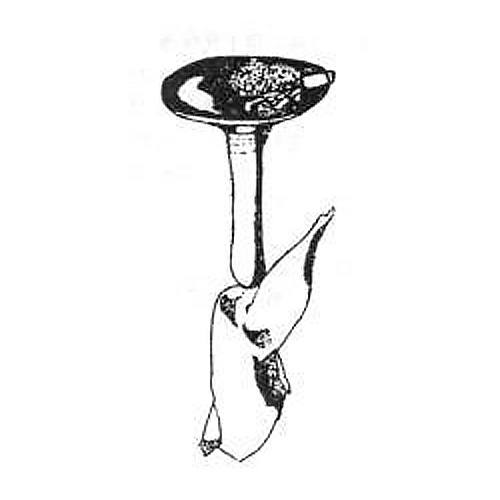panling overview
 Pan bell (pinyin: pán líng), named for its similarity to the disc. Also known as ringing plate, rattle, board bell. The Qiang and Naxi people shake and sing their musical instruments. The Qiang language is called Kuru, and the Naxi language is called Jila and Sashijila. Popular in Maowen, Wenchuan, Muli, Yanyuan, Sichuan Province and Lijiang, Zhongdian, Weixi and other places in Yunnan Province. The bell body is made of copper, disc-shaped and bell-shaped. The height of the bell is 4 cm to 6 cm, the edge of the bell mouth is everted, there is a relatively flat broad side, the diameter of the bell is 10 cm to 16 cm, and the wall of the bell is thicker. A thin hole is drilled in the center of the plate, and a wood screw with a ring is passed through the thin hole, which is connected with the wooden bell handle at the bottom of the plate. A metal clapper is attached to the inner ring of the disc, and its range of motion is on the wide side of the bell mouth. A red ribbon is tied at the end of the bell handle for decoration.
Pan bell (pinyin: pán líng), named for its similarity to the disc. Also known as ringing plate, rattle, board bell. The Qiang and Naxi people shake and sing their musical instruments. The Qiang language is called Kuru, and the Naxi language is called Jila and Sashijila. Popular in Maowen, Wenchuan, Muli, Yanyuan, Sichuan Province and Lijiang, Zhongdian, Weixi and other places in Yunnan Province. The bell body is made of copper, disc-shaped and bell-shaped. The height of the bell is 4 cm to 6 cm, the edge of the bell mouth is everted, there is a relatively flat broad side, the diameter of the bell is 10 cm to 16 cm, and the wall of the bell is thicker. A thin hole is drilled in the center of the plate, and a wood screw with a ring is passed through the thin hole, which is connected with the wooden bell handle at the bottom of the plate. A metal clapper is attached to the inner ring of the disc, and its range of motion is on the wide side of the bell mouth. A red ribbon is tied at the end of the bell handle for decoration.When playing, the hand holds the handle of the bell and the mouth of the bell is shaken upwards, so that the tongue of the bell hits the wall of the bell to make a sound. In the old days, the bell was a rhythm instrument used in religious ceremonies of the Qiang people. It was often used in sacrificial activities to perform witch dances. It was often used together with the hand drums of the Qiang people. It can be played either by one person holding a bell in each hand, or by a drummer. The dual player holds both the drum handle and the bell handle in the left hand, and the rhythm is the same as the drum beat. Today, the bell has been widely used in folk song and dance accompaniment, rich in rich national style.
- Pinyin:pán líng
- alias:rattle, rattle, board bell
- application:Folk song and dance accompaniment
- origin of the name:Because its shape is similar to a disc
- timbre:clear, crisp
overview of other similar instruments
- sanyanxiao overview
- Daguangxian overview
- Leiqin overview
- hahao overview
- yandundagu overview
- Han Xiaozheng overview
- Fang Xiang overview
- guanzi overview
- zhuqin (Dao Qin) overview
- zhuiqin overview
- bangzi overview
- three-stringed piano overview
- Gehu overview
- xiao overview
- xiaokonghou overview
- Konghou overview
- Sheng overview
- suona overview
- hulusi overview
- gushao overview
 渝公网安备 50010702504639号
渝公网安备 50010702504639号